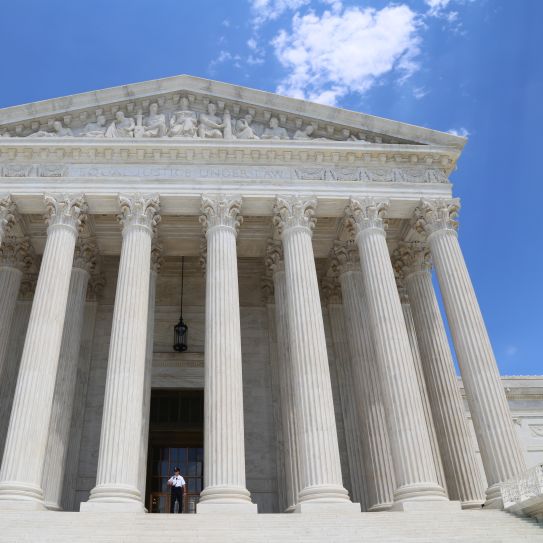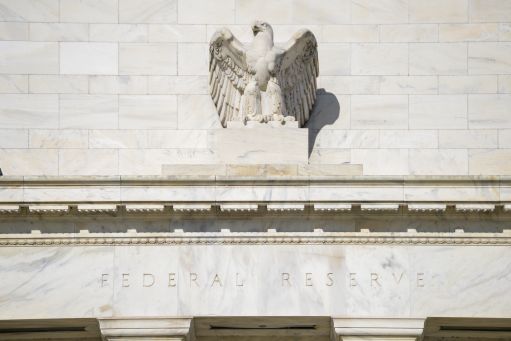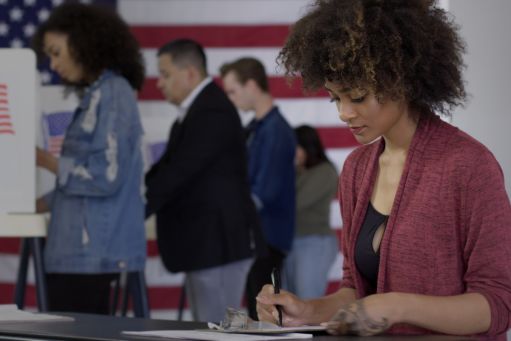The Real Impact of West Virginia v. EPA: Q&A With Climate Economist Gernot Wagner
Wagner explains why the ruling will have implications for broader efforts to forestall global warming.

Amid the headline-dominating rulings released at the end of the Supreme Court’s most recent term was a decision with a direct bearing on climate change and efforts to slow it—though how, exactly, the decision will impact such efforts is, for many, less than obvious.
In West Virginia v. EPA, the Supreme Court barred the Environmental Protection Agency from instituting any rule that would force shifts in power generation from one source to another. Despite this seemingly broad new constraint, plenty of commentators emphasized that the ruling was narrower than it might have been and that it retained EPA’s ability to, for example, regulate the carbon emissions of specific power plants.
Sifting through these caveats and qualifications could leave the average climate-concerned person unsure of the upshot: How, in plain language, is the SCOTUS ruling likely to shape efforts to forestall global warming?
Well poised to offer approachable input is Gernot Wagner, a climate economist and senior lecturer at Columbia Business School. He is a frequent commentator on climate and energy economics and has published four books, including Geoengineering: The Gamble.
In the following conversation, Wagner predicts the biggest impact of the ruling and explains why Congress’s major new climate legislation, the Inflation Reduction Act of 2022, is such a big deal.
Q: Do you think it’s an overstatement to say that the Supreme Court’s decision in West Virginia v. EPA reshapes the economics of climate change?
Wagner: It adds uncertainty. And frankly, that’s the real problem.
The SCOTUS ruling was indeed narrow in the sense that it didn’t revoke EPA authority to regulate greenhouse gasses. But it’s a good news, bad news situation: The good news is we still have regulatory authority from the Clean Air Act of 1970 and the Amendments of 1990. The bad news: The ruling introduced a “major questions doctrine,” where it is basically saying if the regulator moves beyond a particular statute, Congress needs to explicitly give it permission to do so.
That’s almost endearingly naïve. Of course, new legislation to regulate greenhouse gasses would be great. The Clean Air Act of 1970 and the Amendments of 1990 both passed with huge bipartisan majorities; both were signed into law by Republican presidents. That’s not the world we live in these days.
Instead of clarifying how to move forward, the SCOTUS ruling introduces quite a bit of uncertainty, and with regulatory and legal uncertainty comes delay. EPA is going to come out with some rule in the future, and almost regardless of what it will say, there will be litigation, left and right. Litigation means delay, and that, of course, only benefits one side: the fossil fuel interests. Everyone knows they need to cut emissions. They know it's not if; it's when. But one more quarter without a carbon rule means yet another quarter where the true social costs of burning carbon get pushed onto society, while shareholders reap the profits.
Q: SCOTUS barred EPA from implementing rules that lead to a shift in power sources. How broad is that prohibition in practice? What types of rules and regulations does that block that we might have otherwise seen?
Wagner: Ironically, this likely bars EPA from writing more flexible rules akin to a cap-and-trade system that would actually save everyone money.
What EPA can do is regulate coal plants, or gas plants, but it can’t tell a coal plant that it would actually be cheaper to cut emissions by just switching to gas. That means that EPA, instead of being able to have a flexible system—which would, in fact, save money—now has to institute more expensive command-and-control-type measures. That's a problem for everyone: for the covered entities on the one hand and for EPA on the other.
EPA will want to maintain some flexibility. But whatever EPA does decide to do now to regulate greenhouse gas emissions will likely face litigation.
Q: It does seem important that choosing clean energy is becoming a straightforward economic decision, since clean energy is getting so much cheaper. Do you see that as a reason for optimism, in spite of the uncertainty generated by this ruling?
Wagner: Well, it’s too late for pessimism. We can indeed be optimistic about lots of things moving in the right direction, even if we aren’t yet moving fast enough. There are many more solar panels today than there used to be, but there are still too few. In other words, we are building a lot more, and that's great—but the need is increasing even faster.
But there’s indeed some really good news. The climate provisions of the Inflation Reduction Act are a crucial step in the right direction. The key bit: They are focused on investments in new clean energy sources rather than regulating fossil power plants.
So this new law does not address the SCOTUS ruling at all. It, too, skirts the issue of internalizing the negative carbon externality of regulation pollution. What it does do is shift the focus onto jump-starting the transition to the green, clean, lean alternatives. That’s a much-needed shift of focus.
And the $369 billion headline figure is only a small part of the overall impact. The package includes $250 billion in new loan authority for the Department of Energy, which will help channel many more private investment dollars in the right direction.
More Features

Value Investing: How CBS is Staying Ahead of the Curve
Learn how Columbia Business School is updating its acclaimed value investing curriculum to align with a rapidly changing financial landscape.

The Fed and Interest Rates: Is Flexibility the Best Approach?
Professor Pierre Yared talks about his recent research, which looks at the rising popularity of guiding monetary policy through target-based rules.

Interest Rates and Inflation: What’s Next for the Federal Reserve?
Professor Pierre Yared describes why the U.S. economy is unlikely to see an economic downturn comparable with the 1970s.

Can We Curb Fake News? Smart Research May Provide the Answer
Professor Gita Johar shares research insights on why it spreads, spotting who shares it, and a multi-pronged approach to reduce it.
Rise to the challenge.
The COVID-19 pandemic has changed the world of business, while bringing historical inequities and injustice into sharp relief.
Subscribe to Leading Through Change to receive the latest insights from Columbia Business School to help you navigate this unprecedented time.